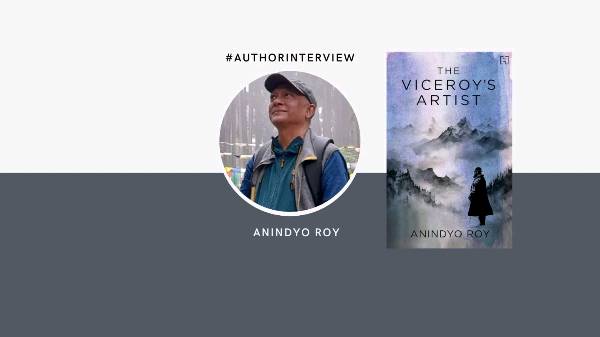
@HachetteIndia
Indian arm of Hachette UK
The Viceroy's Artist - In Conversation Anindyo Roy
Rooted in a troubled personal past, the book is an enchanting exploration of art, adventure and self discovery, set in the backdrop of colonial India. Today. On the Hachette India Swellcast, I have an Anindyo joining me in conversation to talk about the themes of history, art, adventure and self discovery in his book. Hello, Anindyo, thank you so much for joining in
So, Anindyo, in the afterword of your book, you mention the initial uncertainty you faced upon discovering Edward Lear's fascinating journal. And as someone rooted in literary and historical scholarship, venturing into the realm of fiction was perhaps something new for you. So what really was the turning point or the catalyst that, that eventually propelled you to start writing this novel based on Lear's observations and incomplete stories? What sparked that transition from scholarly analysis to the imaginative world of fiction? I'm very curious to know

Anindyo Roy
@anindyoroycolby · 5:00
The paper was well received when I presented it at a conference, and when someone asked me at the conference if I wanted to work on a longer, perhaps book length study of the journals, I responded by saying that I wasn't very certain. And when I did, a year later, I found myself unable to move beyond what I had already elaborated in the essay

Anindyo Roy
@anindyoroycolby · 1:48
The first thing I noticed when I began writing was that my own world of the Himalayas was beginning to filter through my own consciousness and enter the mind and imagination of Edward Lear. As he wandered through Kirshiong and Daji Ling, and as he sat down to sketch the kanchan junga, familiar sights, sounds, and smell from my own world began to enter the narrative I was fashioning
I think Edward Lear was very well known for his whimsical and humorous creations, particularly his limericks and nonsensical verses. How did you navigate the balance between capturing the playful essence of his work and incorporating the more serious aspects of his troubled personal past and his travels in your novel?

Anindyo Roy
@anindyoroycolby · 5:00
A sense of grief and loss pervades these poems, which are, in my opinion, inescapably linked to Lear's imagination and to his tortured world of memory. For example, the limerick there was an old man of Cape Horn there was an old man of Cape Horn who wished he had never been born, so he sat on a chair till he died of despair that Dolores man of Cape Horn. This limerick features a man with a large head sitting in the chair alone, shedding tears

Anindyo Roy
@anindyoroycolby · 3:41
He remembers his conversations with his friend Holman Hunt, and also who was a famous painter and also turner about the middle ground, as he agonizes over the impossibility of sketching the kanchan junga, which was always surrounded by mists and fog. He also remembers his own lines of poetry, mocking the seriousness of his dear friend Alfred Tennyson's elevated and high sounding poetry

Anindyo Roy
@anindyoroycolby · 1:25
During the travels, despite the urgency of needing to be looked after, Lear is fully aware of the toll the journey is taking on Gyorgi and how other indian servants perceive him. Lear finds people around them curious about Gyorgi, his ethnicity, and about his status as a travelling companion. At one point Lear wonders, as he's drawing human figures, how he would appear in Gyorgi's drawings
My next question is around the relationship between Lear and his man servant Giorgio. I think Giorgio was perhaps his only constant companion all through his life. And in your exploration of his life, how did you approach depicting the dynamics between Lear and Giorgio in the book? And what insights did their relationship provide into Lear's character and the cultural context of the time?

Anindyo Roy
@anindyoroycolby · 5:00
While the beginning of this section seems to be told by an omniscient outside narrator, very soon you realize that we have entered Lear's consciousness. The overall portrait of Gyorgi is drawn from the journals, but I had to give Gyorghi a presence beyond the point of view of Lear, turn the many references to him in the journals into a flesh and blood figure who stands on his own
I think I have just one more question for you, Anindyo, but let me take a few moments to thank you for taking the time out and being a part of this super interesting conversation around your book. I wish you all the very best and I do hope to have your voice back in the Swell community talking about more of your work. So yeah, here comes the last question for you

Anindyo Roy
@anindyoroycolby · 4:39
I believe to sum up, the challenge of writing a historical novel from a historical archive was what kept me going during this writing process. Thank you. Thank

